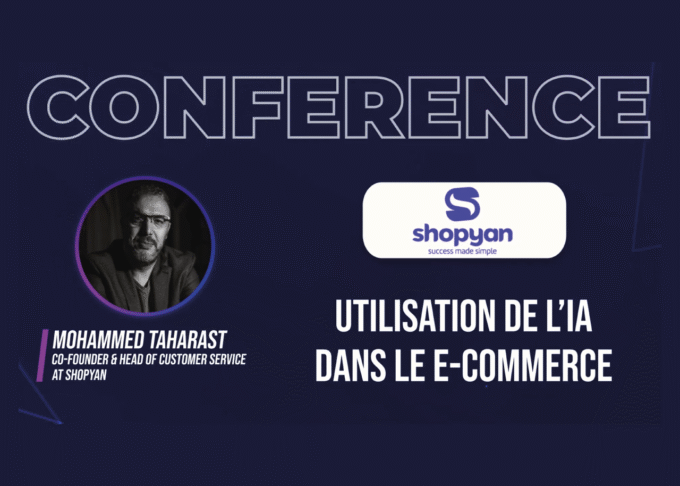Expert insights presented at the EMEC EXPO 2024 conference highlighted a compelling argument: Cash on Delivery (COD) in Eastern Europe is not just a current trend but potentially the future’s most fertile ground for e-commerce growth. The discussion, led by industry experts, delved into the reasons behind this assertion, contrasting the opportunities in Eastern European markets with the increasing saturation and challenges faced in more established regions.
The Evolving E-commerce Landscape: Challenges in Mature Markets
The conference opened by addressing the realities of existing e-commerce markets. Speakers pointed out that while markets like those in Western Europe have seen significant growth, they are now characterized by high competition, escalating advertising costs, and subsequently, shrinking profit margins. The digital landscape has become crowded, making it increasingly difficult for new entrants or even established players to achieve substantial returns without significant investment and constant innovation. As one speaker noted, simply replicating successful strategies from other markets in these saturated environments often leads to becoming “like the last vendor in a crowded alleyway”.
Eastern Europe: A New Horizon for E-commerce with Cash on Delivery
In contrast to these mature markets, Eastern Europe, encompassing countries like Romania, Poland, Slovakia, Slovenia, Greece, and Bulgaria, presents a unique set of advantages. The conference emphasized that these markets are characterized by lower market saturation and a strong preference for Cash on Delivery as a payment method. This combination creates a “winner formula,” reminiscent of the early stages of any e-commerce market where competition is limited, and early movers can establish a strong foothold.
Key Drivers for COD E-commerce Success in Eastern Europe:
- High Conversion and Delivery Rates: A significant advantage highlighted was the exceptionally high confirmation rates (upwards of 90%) and delivery success rates (around 70% or more) observed in these regions. This contrasts sharply with markets where card payments and digital transactions dominate, often accompanied by lower conversion rates and higher return rates. The fact that customers in Eastern Europe generally pay upon receiving their order fosters trust and reduces the risk of abandoned purchases.
- Reduced Competition: The conference underscored the relatively lower level of competition, particularly from established e-commerce players and even specific demographics like Moroccan sellers. This provides a window of opportunity for businesses to enter the market and establish themselves without facing immediate and intense rivalry. As one speaker analogized, being the only tailor in a high-traffic area yields significantly better results than being one among seventy in a traditional tailoring district.
- Large and Untapped Audience: Despite being less saturated, Eastern Europe represents a substantial audience of approximately 90 million people, excluding markets like Italy and the Balkans. This provides a significant potential customer base for businesses to target and scale their operations.
- Efficient Logistics Infrastructure: The region benefits from its geographical proximity, allowing for next-day or same-day delivery between neighboring countries when inventory is strategically placed within a single warehouse, for instance, in Bulgaria. This reduces logistical complexities and costs associated with managing stock across multiple locations. Furthermore, shipping costs within Eastern Europe are notably lower compared to shipping to or within Western European countries.
- Reliable Customer Behavior: Experts noted that customers in Eastern Europe are generally reliable in providing accurate delivery information, increasing the chances of successful deliveries.
Case Study: Leveraging Existing Assets for New Market Entry
The conference also presented compelling examples of how businesses can leverage their existing resources to tap into the Eastern European market. One case study highlighted Moroccan sellers who, despite initially focusing on the domestic market, successfully expanded by selling to the Moroccan diaspora in Italy and Belgium. Remarkably, these sellers often utilized their existing Arabic landing pages and creatives, communicating with customers via WhatsApp, demonstrating that language barriers can be overcome, especially within specific communities. Moreover, efficient shipping solutions from Morocco to Italy, with delivery times as short as two to three days and reasonable per-kilogram costs, further facilitate this expansion. This illustrates how businesses can achieve significant growth by simply extending their reach to relevant customer segments in these emerging markets without requiring substantial overhauls to their existing operations.
Prime CSUDI: A Solution for Navigating the Eastern European COD Landscape
The discussion naturally led to the role of service providers like Prime CSUDI in facilitating entry into these markets. Prime CSUDI positions itself as a solution-oriented platform designed to streamline the process of selling via Cash on Delivery in Eastern Europe. Their offerings address key challenges and needs for businesses looking to expand:
- Integrated E-commerce Platform Connectivity: Seamless integration with popular platforms like Shopify, WordPress, and Google Sheets, simplifying the setup process for sellers. Plans to include Moroccan e-commerce platforms further demonstrate a commitment to supporting local businesses.
- Comprehensive Fulfillment Services: Managing the entire order lifecycle, from receiving the lead to confirmation, shipping, and ultimately, cash collection. Their network includes warehouses strategically located within Eastern Europe to ensure efficient delivery.
- Transparent Tracking and Real-time Data: Providing sellers with access to dashboards that offer real-time visibility into their sales performance, including order status, delivery rates, and cash flow. This data-driven approach empowers sellers to make informed decisions and optimize their campaigns.
- Flexible Payment Models: Offering payment terms that align with delivery success rates, allowing sellers to manage their cash flow effectively and reinvest in their business.
- Sourcing and Logistics Support: Facilitating connections with suppliers in key regions like Turkey and China, offering options for varying product qualities and price points. They also provide guidance on navigating shipping logistics, including direct shipping solutions from Morocco.
- Focus on Conversion Rate Optimization: Emphasizing the importance of analyzing the entire customer journey, from the initial creative to the landing page, to maximize conversion rates. They also highlight the value of building email lists for retargeting and reducing reliance on continuous paid advertising.
Addressing Concerns about Language and Competition
The conference addressed potential concerns about entering these new markets. Regarding language barriers, experts pointed to the availability of AI-powered translation tools and apps within platforms like Shopify, which can effectively translate storefronts and facilitate customer communication. While acknowledging the presence of competition, including from Chinese sellers, the speakers expressed confidence in the adaptability and creativity of sellers who can tailor their offerings and marketing to the specific nuances of the Eastern European market. The perceived lack of creative marketing and reliance on basic website designs by some existing players presents an opportunity for more innovative sellers to stand out.
Conclusion: A Strategic Imperative for E-commerce Growth
The insights shared at EMEC EXPO 2024 paint a compelling picture of Eastern Europe as a significant and largely untapped opportunity for e-commerce businesses. The strong preference for Cash on Delivery, coupled with lower competition, a substantial customer base, and improving logistics, creates a favorable environment for growth. Service providers like Prime CSUDI are playing a crucial role in enabling businesses to navigate this landscape effectively, offering comprehensive solutions that address the unique characteristics of these markets. For businesses seeking new avenues for expansion and higher returns, embracing the Cash on Delivery model in Eastern Europe appears not just as a viable option but as a potentially transformative strategy for future success.















